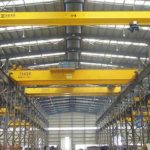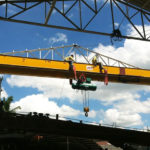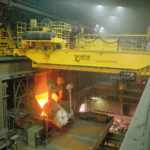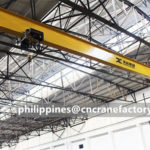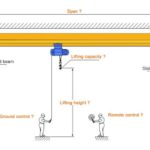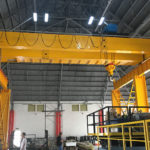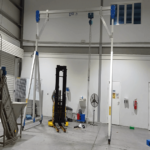Overhead cranes are important tools in the power supply and electrification industries. These overhead cranes play a vital role in ensuring efficient and safe handling during the installation, maintenance and repair of electrical equipment. This article explores overhead cranes designed for power supply and electrification applications.
Powered and Electrified Overhead Crane Types
Bridge cranes are available in a variety of configurations to meet different needs in the power supply and electrification sectors. Here are the two most common types of segmentation:
- Top-running overhead crane: Top running crane has a bridge-like structure that operates on top of an elevated runway. This design maximizes headroom within the facility, making it ideal for lifting and manoeuvring transformers, switchgear and other bulky electrical components.
- Underslung crane: Unlike top-operating cranes, the bridge of an underslung crane is suspended from the ceiling beams of a building. This option is ideal for situations where headspace is limited. They are commonly used in light-duty applications within power plants and substations.
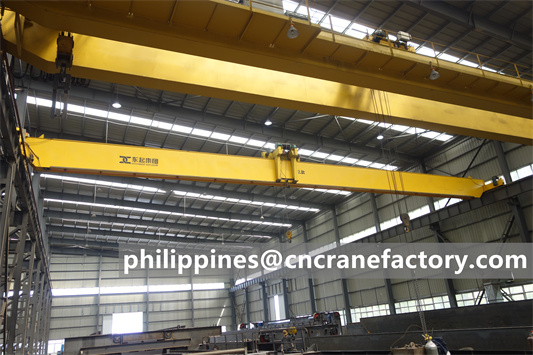
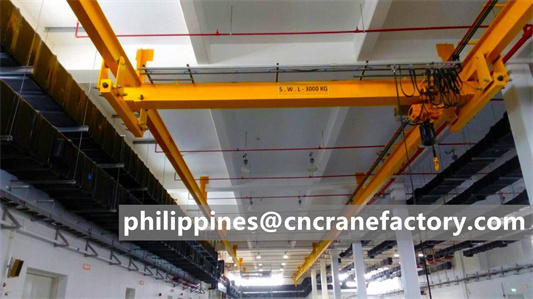
Advantages of Bridge Cranes in Electrification of Power Supply
- Enhanced safety: Overhead cranes eliminate the need for manual lifting, reducing the risk of worker injuries associated with heavy equipment handling.
- Improved efficiency: Their precise control and manoeuvrability enable faster and more efficient processing of electrical components, minimizing project downtime.
- Precision Handling: Overhead cranes provide the operator with superior control of the load, allowing for safe and accurate positioning of delicate electrical equipment.
- Improved Productivity: By streamlining lifting and transportation processes, bridge cranes help improve overall project productivity within power plants and substations.
- Versatility: These cranes can be customized with various attachments such as hooks, jibs and baskets to handle a variety of electrical equipment.
How Are Overhead Cranes Used for Power Supply and Electrification?
Bridge cranes play a vital role in several stages of power supply and electrification projects:
- Equipment Installation: During the initial installation of power plants and substations, bridge cranes assist in the lifting and precise placement of heavy transformers, switchgear and conductors.
- Maintenance and Repair: Overhead cranes help in the safe and efficient removal and replacement of electrical components that require maintenance or repair work.
- Transformer handling: These cranes are useful for handling transformers, which are often the heaviest equipment within a power plant or substation.
- Busbar handling: Overhead cranes are used to lift and position busbars, which are high-voltage conductors that distribute power within a facility.
- Facility Maintenance: They can also be used for general maintenance tasks within a facility, such as lifting and moving heavy tools or replacing parts.
Choosing the Right Powered and Electrified Overhead Crane
Choosing the right overhead crane for your power supply or electrification needs requires careful consideration of several factors:
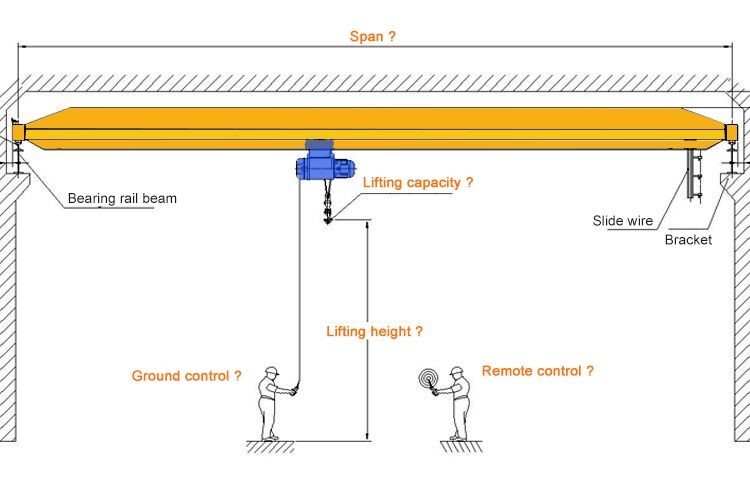
- Lifting Capacity: The crane’s lifting capacity must be sufficient to handle the heaviest electrical equipment you plan to lift. Consider future needs and potential upgrades when making this decision.
- Span: The span is the distance the crane bridge can travel on the runway. Choose a span that is large enough to cover your work area.
- Lift Height: Lift height determines the maximum vertical distance the crane can lift a load. Make sure it is high enough to reach the highest point where the equipment needs to be lifted.
- Duty cycle: Duty cycle refers to the frequency and duration of use of the crane. Consider the frequency and duration of the crane’s operation to select a model with the appropriate load rating.
- Space layout: The physical constraints of the facility (such as ceiling height and available runway space) will affect the type and size of overhead cranes that can be accommodated.
- Environment: Overhead cranes operating in power plants may be exposed to high temperatures, dust or moisture. Make sure the selected model is suitable for the specific environmental conditions.
Overhead Crane for Power Supply & Electrification Specifications
Overhead crane specifications encompass a range of technical details that define the crane’s capabilities and limitations. Here are some key specifications to consider:
- Capacity: This indicates the maximum weight the crane can safely lift.
- Span: This refers to the horizontal distance the bridge can travel.
- Lift Height: This specifies the maximum vertical distance a load can be lifted.
- Bridge Speed: This determines how fast the bridge travels horizontally along the runway.
- Trolley Speed: This indicates the speed at which the hoist (lifting mechanism) travels along the bridge.
- Hoisting Speed: This specifies how fast the hoist raises or lowers a load.
- Power Supply: This refers to the type of electrical power that operates the crane
Our Yuantai Crane Company has been exporting overhead cranes, gantry cranes, jib cranes and electric hoists to the Philippines and other Southeast Asian countries as well as countries around the world for more than ten years. We have very rich experience and a green crane manufacturing industry chain. contact us to get free crane solutions and free quotations, and look forward to our friendly cooperation!
